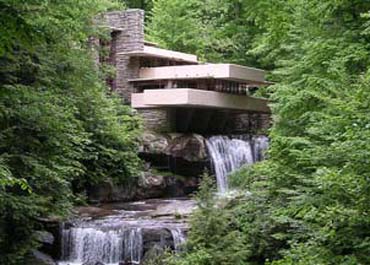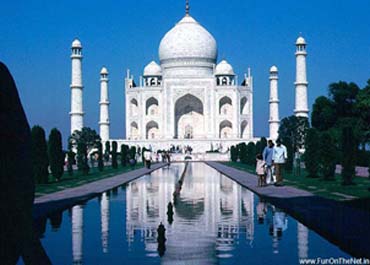JavaScript
In Spring, 2010 I took COIN 71 - An introduction to computer programming using the JavaScript language. Even though I received a grade of A in that course, I feel I basically scraped through with a minimum of knowledge, it was really a very frustrating class, due to an absolutely dreadful teacher. However, I did come up with 3 things in JavaScript which are quite nice IMHO. So here they are:
The first JS trick is a routine to swap out an image in a webpage. I have used it to make my blog seem more interactive. It's also an effective way to present a before and after sequence.
So you have a small post with an image and some text as a caption, in addition to a button which calls the function. This function changes the source and caption of the image, in other words puts a new picture and new text into the caption of the picture. You can also change the text written on the button.
This is some random text to go along with the picture. Just some senseless prattle
This is just some text to go alongside the image. I could do this all day. I think I'm very funny and so do my friends.
Blogger has placed the image in a table. You must reference the variables you want to change by giving identifiers (names) to the <img> and <td class="tr-caption"> tags.
So in your html page (or to a seperate JS file), define the image and caption and enter the default values:
The above code creates the id and puts a value in the caption field of the table holding the image.
Instantiate a button
<input id="myButton1" onclick="swapImage()" type="button" value="Click me for action">
The JS function called when button named myButton1 is clicked is called swapImage(). swapImage() examines the value of the label on the button, then changes the image source and table caption based on that value. Very simple but works very well. One thing left to do is change the value of the a tag (SRC link to large photo).
function swapImage() { if (document.getElementById("myButton1").value=="Show me the first") { document.getElementById("myButton1").value="Show me the second"; document.myImage.src ="http://name of first image file.JPG" document.getElementById('myCaption').innerHTML="Caption for first image" ; } else { document.getElementById("myButton1").value="Show me the first" ; document.myImage.src ="http://name of second image file.JPG"; document.getElementById('myCaption').innerHTML="Caption for second image" ; } }
The second little JS function that I'm quite proud of is one which will actually not pass the W3C validation as it is illegal to give an id a name that is a number. (That sentence pains me with its obfuscation). This is a technique I wrote in June 2010 for my friend Éodie's website - she's an architect. I have 4 thumbnail images inside a table. (My img tags are id 1-4, and onClick causes each img to call SelectImg() passing the same number to the function.The large image area has id = 0 and at start up it is displaying the image's "alt " value). SelectImg() inserts some text as a caption based on an Array. It's a bit clunky, but it is just a small amount of code and it has a nice effect.
function SelectImg(id) { var lastID = 0; var textVal = new Array (); textVal[1] = "This is the white house. Élodie has built several white houses." ; textVal[2] = "Falling Water - credited to FLW, but it was actually Élodie who built it." ; textVal[3] = "Élodie was employed for many years by Mrs. WInchester." ; textVal[4] = "On a trip to India last year, Élodie built the Taj Mahal." ; if (lastID > 0) { document.getElementById(lastID).className = "thumbNormal"; } document.getElementById(id).className = "thumbSelected"; document.getElementById(0).src = document.getElementById(id).src; document.getElementById('the_text').innerHTML = textVal[id]; lastID = id; }
The above code puts some appropriate text (stored as an array) under the large image. Try it for yourelf below.




|
|
<table border="0"> <tr> <td valign="top"> <img id=1 class="thumbNormal" src="images/name of image 1.jpg" alt = "image1 " width="80" onclick="SelectImg(1)" /> <img id= 2 class="thumbNormal" src="images/falling_water.jpg" alt = "falling water" width="80" onclick="SelectImg(2)" /> <img id=3 class="thumbNormal" src="images/winchester-house.jpg" alt = "winchester" width="80" onclick="SelectImg(3)" /> <img id=4 class="thumbNormal" src="images/taj-mahal2.jpg" width="80" alt = "taj mahal" onclick="SelectImg(4)"/> </td> <td width="5" </td> <td valign="top"> <img id=0 src="" alt = "Click on a thumbnail to see a large image" /> <p id = "the_text"></p> </td> </tr> </table>
This is how the table is defined to hold the images.
My third and last piece of code is another one that relies on having a number for an id. I know, I know, you can't do that. Well, I didn't know that obviously when I was writing this, but I still don't see the reason for it. Anyway, the code works, it just won't get a nice green check mark. The rule that I'm breaking is that the value of the id "Must begin with a letter A-Z or a-z". So the function could be altered to comply by by having the program create an id with a prefix of A, then read the array according to a parsed value. But I can't be bothered. This one I can't demo so see it in action in the site's navigation at Élodie's website.
As you navigate through the pages SOMETHING HAPPENS TO THE BUTTONS that is visited this in turn calls putCurrent(current_screen).
<!-- All sidebar buttons get an id of (button + array element number) on page load and the currently-displayed one is set to "current" --> <a class="button" name = "buttons" href="./ela_home"> <span class="buttonCapLeft"> </span> <pan class="buttonText">Home</span> <span class="buttonCapRight"> </span> </a>
<a class="button" name = "buttons" href="#"> <span class="buttonCapLeft"> </span> <span class="buttonText">Sevices</span> <span class="buttonCapRight"> </span> </a> <a class="button" name = "buttons" href="./test.gallery2.html"> <span class="buttonCapLeft"> </span> <span class="buttonText">Projects</span> <span class="buttonCapRight"> </span> </a> <a class="button" name = "buttons" href="#"> <span class="buttonCapLeft"> </span> <span class="buttonText">Contact</span> <span class="buttonCapRight"> </span> </a> <a class="button" name = "buttons" href="./browser.html"> <span class="buttonCapLeft"> </span> <span class="buttonText">Browser</span> <span class="buttonCapRight"> </span> </a> <a class="button" name = "buttons" onClick="history.go(-1)">> <span class="buttonCapLeft"> </span> <span class="buttonText">Back</span> <span class="buttonCapRight"> </span> </a>> </div>This effect is acheived by JavaScript for this is a call() is:
function put_Current(current_screen) /* this function: (i) resets all butons and (ii) sets the calling screen button to id current (I'm particularily proud of this one !) */ { var arr = new Array(); /* alert("inside put_Purrent"); */ arr = document.getElementsByName("buttons"); for(var i = 0; i < arr.length; i++) { arr.item(i).id=("buttons" + i) ; } arr.item(current_screen).id=("current") ; }
